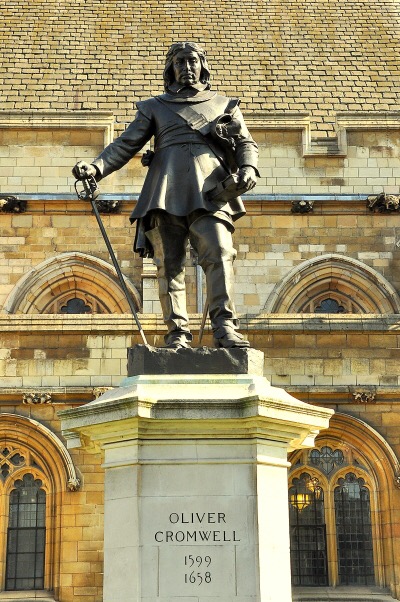According to the Historical & Topagraphical Notes by Grove White Volume 2, Richard Magner was the only person in Ireland, England or Scotland to outwit the Lord Protector.
In 1642 Richard Magner owned Castlemagner Castle & manor and the townland of Coolavaleen. Altogether about 772 acres of land. He was also the collector of the Crown Rents of the barony of Orrery & Kilmore to the amount of £40-5-3 which he paid yearly to the Chancellor of the Irish Parliament in Dublin.
Richard took no part in the great battle which was fought on some of his property at Rathmaher & Ballyheen on the early afternoon of Saturday 13th November 1647, the Battle of Knocknanuss. He stayed neutral with the two warring parties although the 1641 rising with the coming of the Cromwellian Confiscations and wiping out of the greater number of Irish Lords, Gaelic and Norman and putting in their place a new element in the population alien in race and religion from the mass of the people.
Richard Magner saw that a government was going out and a new one coming in. He decided to go to Cromwell in Clonmel and secure his castle and estate to get his appointment as crown rent collector confirmed by him.
Apparently, Cromwell was advised of Magner’s coming and was told that he was not to be trusted. At the interview, Cromwell gave Magner a letter which he wished him to deliver to Col. Phair in Cork city (Castlemagner is 30 miles from Cork city).
Cromwell’s secretary at the time was Sir William Penn who was out then collecting the information for the Down Survey. He was reared and grew into a man at Macroom castle, Co Cork. It was Penn who founded the state of Pennsylvania, USA. It is possible he knew the Magners of Castlemagner and was able to advise Cromwell of his real value to the government.
Magner was also thinking and wondering about Cromwell’s letter so he decided to open it to find what its message was. To his surprise there were only three words “Hang the Bearer”. He closed up the letter and took it on to Mallow on his way back from Clonmel arriving in Mallow he called at Mallow Castle. The Jeffson Normis family as now were living there then, the walled town was ruled by them.
Magner called on John Boyle and gave him Cromwell’s letter with instructions to take it to Col. Phair of Cork. There is no further account of Richard Magner. Tradition is that he escaped to France. John Boyle was governor of Mallow before its capture by the Castlehaven’s Confederate Catholics in 1643. After that, he was acting as a double agent with a leg in both camps. When Boyle presented the Magner letter to Col. Phair he was arrested and lodged in prison. The Cromwellian authority in Cork then asked why a loyal and faithful subject should be hanged so in due course he was released.

Magner seemed to hold two properties or should we say three; Castlemagner & Lisgriffin, and also Old Castle (Magner’s Rock) near Kildorrery. They attached themselves to the Barrys and the Roches. The family name Magner is found near Fermoy in the townland of Kilmagner (Church of Magner), Barony of Condons and Clongibbons, Co Cork. There is no Magner family tree in the Geneological Office Dublin Castle. There are no Magners within the parish now. In the graveyard there is a headstone erected by John Magner of Ballyhest in memory of his brother-in-law William Shepard who died 29th September 1800, 47 years, May he rest in peace. Ballyhest is in the parish of Kilbrin. This family moved to the Smithfield in Glantane. They are represented today by the Magners near Mallow and Donerail. The Pipe Roll of Cloyne shows in fourteenth century that Anglo-Norman families such as the Magners and Barrys held from the see of Cloyne lands in Duhallow which in the sixteenth century were in Irish hands. For instance, David Magner held Clonmeen and five carncates. Also, Subulter was held by Thomas Magner. Robert Barry and Philip Fitzmartin Gleanings from Irish History, by Butler, page 93
By 1641 Clonmeen and Roskeen were O’Callaghan’s property
When the Anglo-Normans landed in 1170 they found North Munster in the hands of Donnell Mor O’Brien and South Munster ruled over by Dermod Son of Cormac McCarthy.
When Henry II landed in 1171 King Dermod came to him of his own accord, did homage, promised tribute and gave one of his sons as a hostage. Just five years later Henry II granted the whole kingdom of Cork except the city to Milo de Cogan and Robert Fitz Stephen. The grantees invaded McCarthy’s land and were helped by the O’Briens. Some years of alternative peace and hostility followed until most of the clans were rooted out of the level portions of Co Cork, Kerry and Limerick so we must suppose that the Irish left their homes and settled in the mountains along the south west. The tide of invasion lapped up to the feet of the Kerry Reeks. The Fitzgeralds had Mallow. Duhallow fell to the Norman family of Barry. They had Lohert Castle, Liscarroll, Ballyclough & Kilmaclinen. The castle and manor of Mallow was Fitzgerald.
The Magners were well established here in Castlemagner in the early 13th century as the district sometimes referred to as Magners town. Their land must have included most of the present parish of Banteer, Castlemagner, Kilbrin and part of Liscaroll and part of Lisgriffin. This was greatly reduced at the time of the Down Survey, at that time the Callaghans held all Kilshannig and Clonmeen parishes south of the Blackwater and north of it the Duhallow portions of Mallow and Ballyclough, all Roskeen, the south of Castlemagner and as much of the modern Dromtariff as is east of the river Allow. McDonagh McCarthy had the rest of Castlemagner except such lands as the Magners had preserved.

